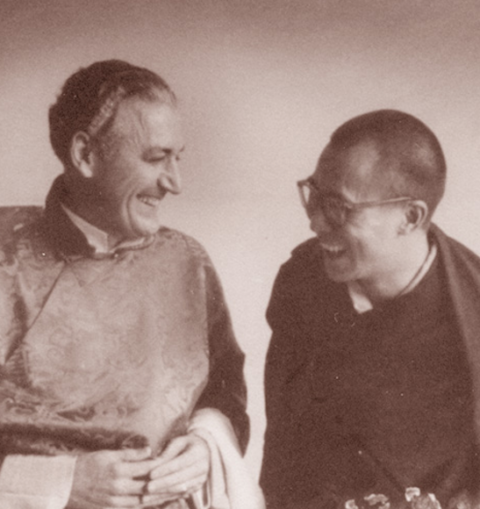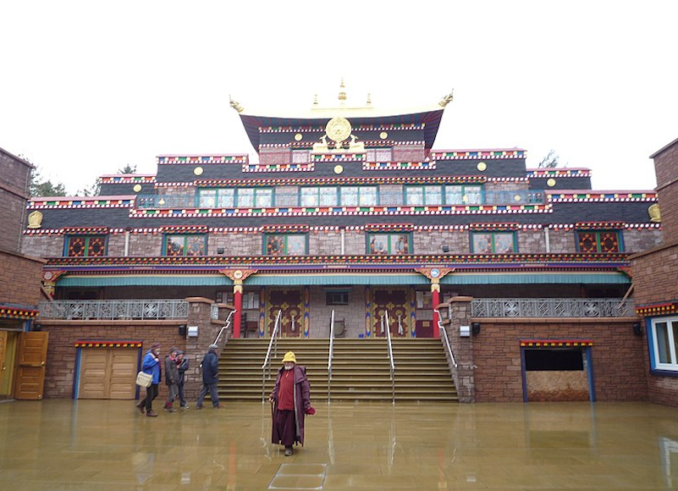The recent Jubilee bank holiday weekend provided an opportunity to pause for thought and consider the service rendered by the world’s oldest and longest-serving monarch and head of state. No, not her. She gets enough attention, and anyway our own Elizabeth II is a part-timer with a mere 70 years on the throne and a youngster of only 96 years. The history books remind us the Queen isn’t the world’s longest-ever serving monarch but second behind Louis XIV with Rama IX (former King of Thailand) being overtaken for second place by Her Majesty only recently.
For Puffins, a favourite previous long-serving monarch might have been Franz Josef I of Austro-Hungary. Although only 49 years on the throne, he compensated through an avowed determination to change absolutely nothing and preferred hunting to affairs of state. While bagging an impressive 55,000 kills (from woodcock to wild boar) Franz Jospeh left all else to underlings. None of this did Austria or Hungary any good with the empire collapsing during World War One and the monarchy being abolished two years after his death in 1916.
Suggestions of excess oblige us to the King of Saudi Arabia. Finty.com estimates the 87-year-old, who has only been on the throne for 7 years, has amassed wealth totalling $18 billion. While omitting mention of the oil, Finty oddly claims the King made his money from setting up ‘non-profits’. Forbes Magazine takes a more sanguine view of the Sultan of Brunei. Unafraid of the ‘O’ word they put his wealth at $20 billion while reminding their readers that the Sultan is the ‘second longest-reigning current’ monarch after Elizabeth II. Born in 1946, the Sultan ascended in 1967, giving him an impressive 65 years on the throne. Her Majesty, as the world and his country cousin knows, ascended in 1952 and has reigned for a full seven decades.
But Forbes is wrong, as is every history book, newspaper and television commentator in the world. No, the world’s oldest and longest-serving monarch and head of state is the Dalai Lama, ironically since the Chinese invasion of his native Tibet in 1950, without a state to be head of. Born in 1391, with the assistance of a re-incarnation or twelve, the Lama is currently in his 631st year.

Young Tenzin Gyatso, the 14th Dalai Lama in 1944,
Unknown photographer – Public domain
For when a Dalai Lama appears to die, his spirit passes into the body of a boy born in that moment. But who, where and how? Last time around, a Reuters correspondent explained the procedure to concerned readers. The whole of Tibet prays for the discovery of the reincarnated Dalai Lama. Holy men carefully examine babies born about the hour of the Dalai Lama’s death to see if they possess the distinctive marks laid down by tradition.
A number of baby boys are carefully chosen and are reared until two or three years old when the final test of identity is made. The new incarnate will know instinctively how to handle the personal belongings of the late Dalai Lama. He will then be trained for office while the reins of government are held by a regent. Not the easiest of tasks. At the time, Thyra Weir (bylined as one of the few European women who have been to Lhasa) reported the sad news of the previous Lama’s death.
The most powerful ruler in the world, the great Dalai Lama of Tibet, is dead. The whole of Buddhist Asia is shaken to the core by the news. Greatest autocrat of the day, controller of both temporal and spiritual power, ruler of millions of people, this romantic figure has dominated the heart of Asia ever since he was old enough to assert himself. He died at the age of sixty. When I saw him in December 1932 he was in perfect health, a young fifty-nine, fresh-complexioned, alert, kindly – a striking personality.
If anything the Reuters correspondent simplified the process. Subsequent to Dalai Lama XIII’s December 1933 passing, it took 6 years to find a successor. An expedition set out from Lhasa, the capital of the inaccessible Himalayan country, armed with prophecy, visions, some of the deceased Dalai Lama’s familiar possessions and a big clue – Dalai Lama XII’s embalmed head, originally facing southeast, had turned to face north east.
Eventually, Lhamo Thondup was found in the small hamlet of Takster at the edge of the traditional Tibetan region of Amdo in Qinghai province. From a family of farmers and horse traders, Lhamo was born on 6th July 1935 (not quite within an hour of December 1933) on the trail between Taktser village and the turquoise roofed Kum Bum monastery, slap bang along the disputed border with a China descending into Nationalist v Communist chaos.
A tug of war ensued with Lhamo encamped at the monastery where two of his brothers were training to be monks. The Chinese authorities were insisting upon a Trojan Horse-style massive military escort to take the infant to Lhasa. The wrangling continued for years with, eventually, a caravan of Muslim traders en route to Mecca safely delivering the infant in return for 300,000 silver dollars.

Panorama of Lhasa in 1942, with the Potala Palace at the upper left,
Tenzin Gyatso, 10th Demo Rinpoche – Public domain
The boy arrived in the capital in late 1939, as did other candidates. To prevent cheating and corruption, a ceremony of Golden Urn would be held. Although too complicated for the Western mind to comprehend, your author suspects the Golden Urn is a selection process, relying upon pure chance, where all the cheating and corruption takes place before the only remaining candidate draws the only lot in the golden urn.
Sure enough, in among the jockeying for position, on 26th January 1940 the Central Government followed the recommendation of Regent Reting Rinpoche and exempted Lhamo Thondup from the lucky dip. Master Thondup became Dalai Lama XIV on February 5th 1940. Although six years sounds a long time, the announcement of the successor to the fifth Dalai Lama took fifteen years as regent Desi Sangye Gyatso didn’t tell anybody Five was dead and ruled in his absence for a decade and a half while the dead Lama was ‘on retreat.’
If Puffins think being immortal might lead to some long reigns, they’d be wrong. A run of early deaths afflicted their Holynesses between 1805 and 1875. IX died of a cold at the age of only 9. X became ill as a teenager, during a Lhasa epidemic, and died aged 21. XI ‘died suddenly at the end of the Nepalese-Tibetan War of 1855-1856, aged 17. XII died of a ‘mysterious illness’ when 18. All of these natural fatalities occurred as the Qing Dynasty of the Manchus sought influence over what they thought of as their own vassal mountain kingdom. Taps nose. Ironically the Dalais enjoyed a change of luck for the better with Thirteen who lived to be sixty or fifty-seven depending upon which contemporary newspaper report you believe. The present Dalai Lama, XIV, is now in his 87th year.
Although one might raise an eyebrow in admonishment at the dastardly behaviour of the late-19th century Manchu, they might in turn raise a thin back line of hair across an unscrupulous but furrowed yellow forehead at us. In December 1903, the Younghusband Expedition struck out from British India into Tibet. The expedition fought its way through the country, eventually reaching Lasha in August 1904 only to find that Dalai Lama XIII and his entourage had fled to China. In Lhasa, what was left of Tibetan officialdom was forced to sign the Convention of Lhasa, a pointless treaty that humiliated China as well as Tibet and which proved to be irrelevant and unenforceable.
The Qing Dynasty came to an end in 1912 to be replaced by a republic. By the enthronement of XIV, China was at war with Japan, at the conclusion of which they were at war with each other with the Communists declaring victory over the Nationalists in October 1949. A year later, Tibet was invaded by the Communists and annexed. The Dalai Lama remained in his homeland until 1959 but then was forced to flee his 1,000-chamber Potala Palace after an unsuccessful revolt against the Chinese occupiers in March of that year.

Miguel Serrano with the Dalai Lama , 11 06 1959,
Unknown photographer – Public domain
On Wednesday 1st April 1959, the Belfast Telegraph reported 50,000 Chinese troops were searching house to house, monastery to monastery, with Indian frontier posts on the lookout as the Dalai Lama dodged Chinese paratroopers and searching People’s Liberation Army Air Force warplanes.
“The territory through which he is believed to be moving is the roadless and mountainous Lhoka region of the plateau southeast of Lhasa, which borders Bhutan and the North-Eastern frontier agency of India.”
Two weeks later, the 23-year-old fugitive was reported in Bombdila in India’s Kameng Frontier Division making his way to Mussoorie in northern India where a 15-room luxury residence was being prepared for him at the expense of a local cotton millionaire, Mr G D Birla. Other fleeing exiles settled further afield. Pining for somewhere familiar to call home, exiles sought an inhospitable, cold, remote, harsh terrain populated by unsophisticated illiterate country people, unfamiliar with the outside or modern worlds.
Dumfrieshire ticked every box.
A community was established at the Samye Ling Tibetan Buddhist Monastery in Eskdalemuir, the wettest place in Britain. One of the few Tibetan centres in the West, during the 70s and 80s it became a major Kagyu centre with regular long-term visits from Kagyu masters such as Chamgon Khentin Tai Situpa, Khenchen Thrangu Rinpoche and Khenpo Tsultrim Gyamtso Rinpoche as well as Goshir Gyaltsabpa. Another frequent visitor was His Holiness the Dalai Lama himself. In May 1993, The Daily Record reported the Lama, in front of 2,500 guests that included Prince Andrew’s former girlfriend Koo Stark, laying the foundation stone of a new college there.

Samye Ling Temple in Dumfriesshire.
The main temple of Kagyu Samyé Ling Monastery and Tibetan Centre, Eskdalemuir,
Roger W Haworth – Licence CC BY-SA 4.0
A priest at my old school had an interest in the Indian tradition and would visit Benedictine monk Bede Griffith’s ashram in southern India’s Kerala province during hols. Another visitor was the Dalai Lama who co-authored a book with Griffith entitled The Marriage of East and West. The conviviality of the ashram combined with our school’s proximity to Eskdalemuir meant that, when waiting excitedly for a call from home, a boy might occasionally be interrupted by the Dalai Lama phoning around for Father Philip. Better times.
Besides phoning my old school, writing books and visiting Dumfriesshire, His Holiness has been giving interviews. Almost definitely a Puffin, in 2018 the Lama said that Europe belongs to Europeans and that there was a moral obligation to return refugees to their native continents to assist in the development of countries there. As for reincarnation, in 2019 he mentioned to a journalist he wouldn’t mind coming back as a girl as long as she was pretty. People would just look at the floor all the time if she was ugly.
So much for the modern-day and its sensibilities. Looking perhaps with foreboding to the near future, regarding reincarnation itself, the ageing record holder concedes it is up to the Tibetan people to decide whether or not the institution should continue upon his passing.

Dalai Lama,
Christopher Mitchel – Licence CC BY-SA 2.0
© Always Worth Saying 2022



